For the Hell of It: A Fashion Designer Invents a Festival in Kyushu
Photo by Takeshi Hirabayashi ©︎Mixed Bathing World Executive Committee
The city of Beppu on the Japanese island of Kyushu is a hot spring paradise, where steam from the volcanic activity that also produces broiling baths wafts up endlessly in the streets. The vaporous landscapes of Beppu's Kannawa area have been called "jigoku" (hells) for centuries. Once presenting real dangers, they are now enjoyed as tourist destinations. In 2009, Beppu launched Mixed Bathing World, its first contemporary art festival. It is now on the sixth edition of in Beppu, an annual art show inviting one major artist or group to direct it. Previous hosts include Anish Kapoor and the collective mé. This time, the Issey Miyake protégé Tamae Hirokawa was tapped. Hirokawa heads the fashion brand Somarta and has made a name for herself with achievements such as designing the medal ceremony jackets for the 2020 Tokyo Olympic Games.
Hirokawa came up with the concept of a "matsuri" – a Japanese festival with Shinto roots traditionally held to welcome the gods and ward off disaster and evil. The idea of a crowd-drawing matsuri during a pandemic was met with some resistance at first, but ultimately welcomed by the public. Hundreds of Beppu citizens of all ages showed up for the "Jigoku Matsuri" parade and performance on December 18th, which kicked off this session of "in Beppu" running through February 13th. The festival also includes exhibitions and special events. Some of its content can be found online.
Tamae Hirokawa's "in Beppu" Matsuri

Hirokawa's vision for a matsuri involved creating new marebito – animistic spirits believed since ancient times to dwell in all creation. She created outfits for gods of fire, wind, water, earth, and kamado (the hearth), all inspired by Beppu's natural elements and culture.
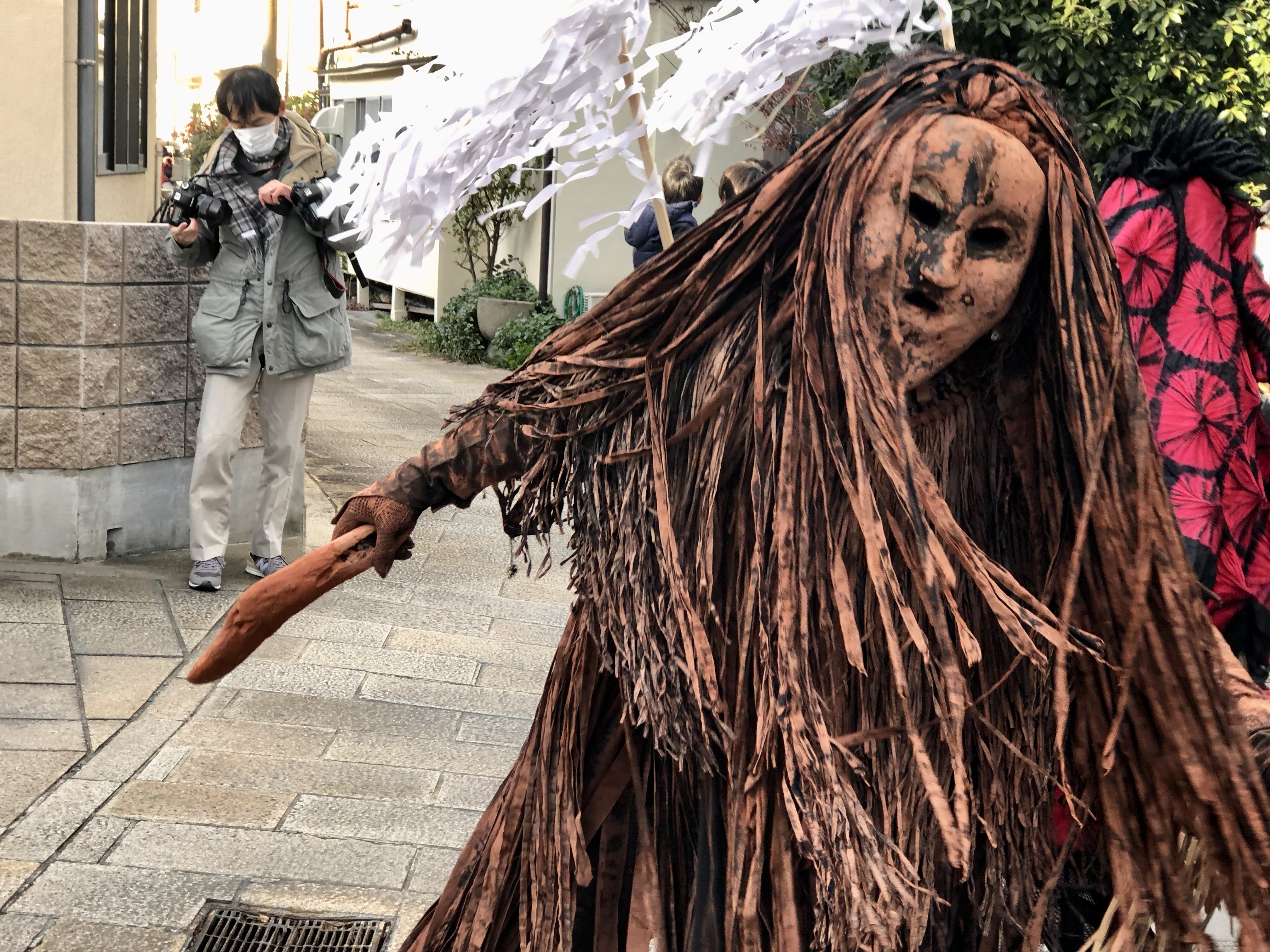
The marebito seemed like forces of nature themselves. Numbering a dozen, they appeared in elaborate headdresses, masks, and robes made from shredded cloth and other materials. They descended from Honoo Honome Shrine on Mt. Tsurumi before marching through town and performing a dance planned by choreographers Ema Yuasa and Daisuke Omiya.
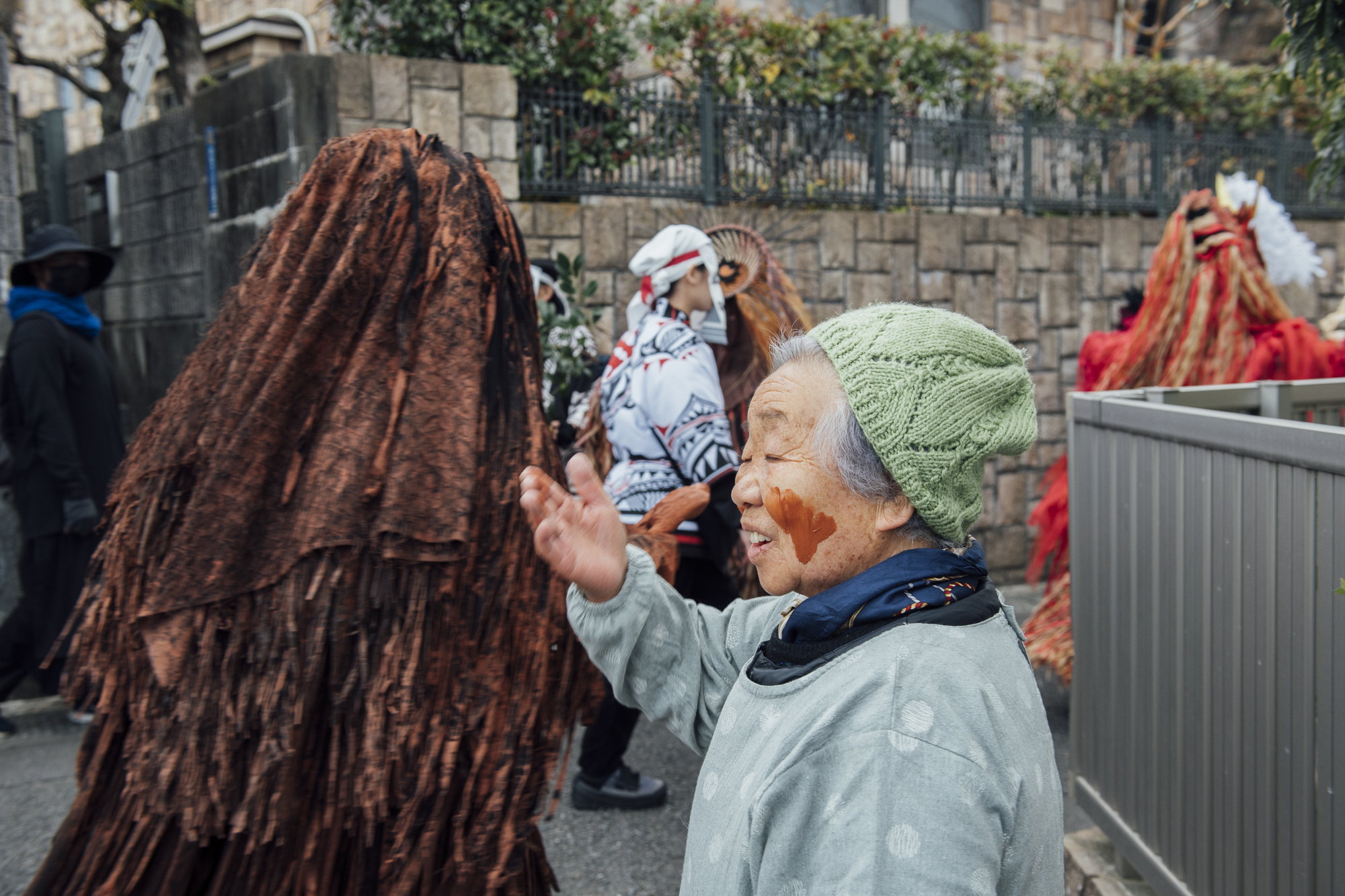
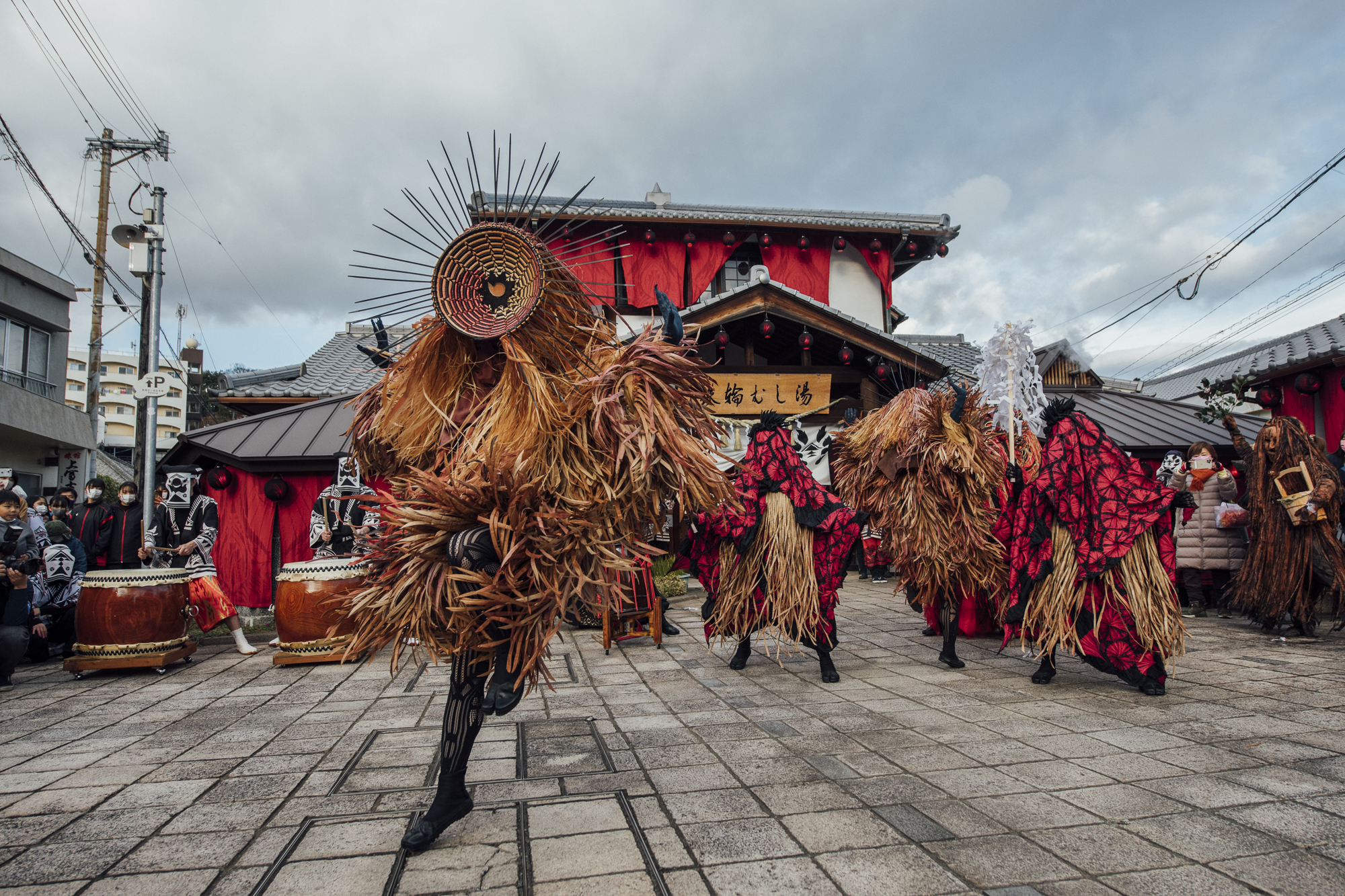
The marebito mingled with the public, startling and delighting onlookers in equal measure as they entered houses, frightened children, and gave blessings. In addition to the in-town matsuri, there would later be a purification ritual near the sea intended to cast out sickness and darkness.
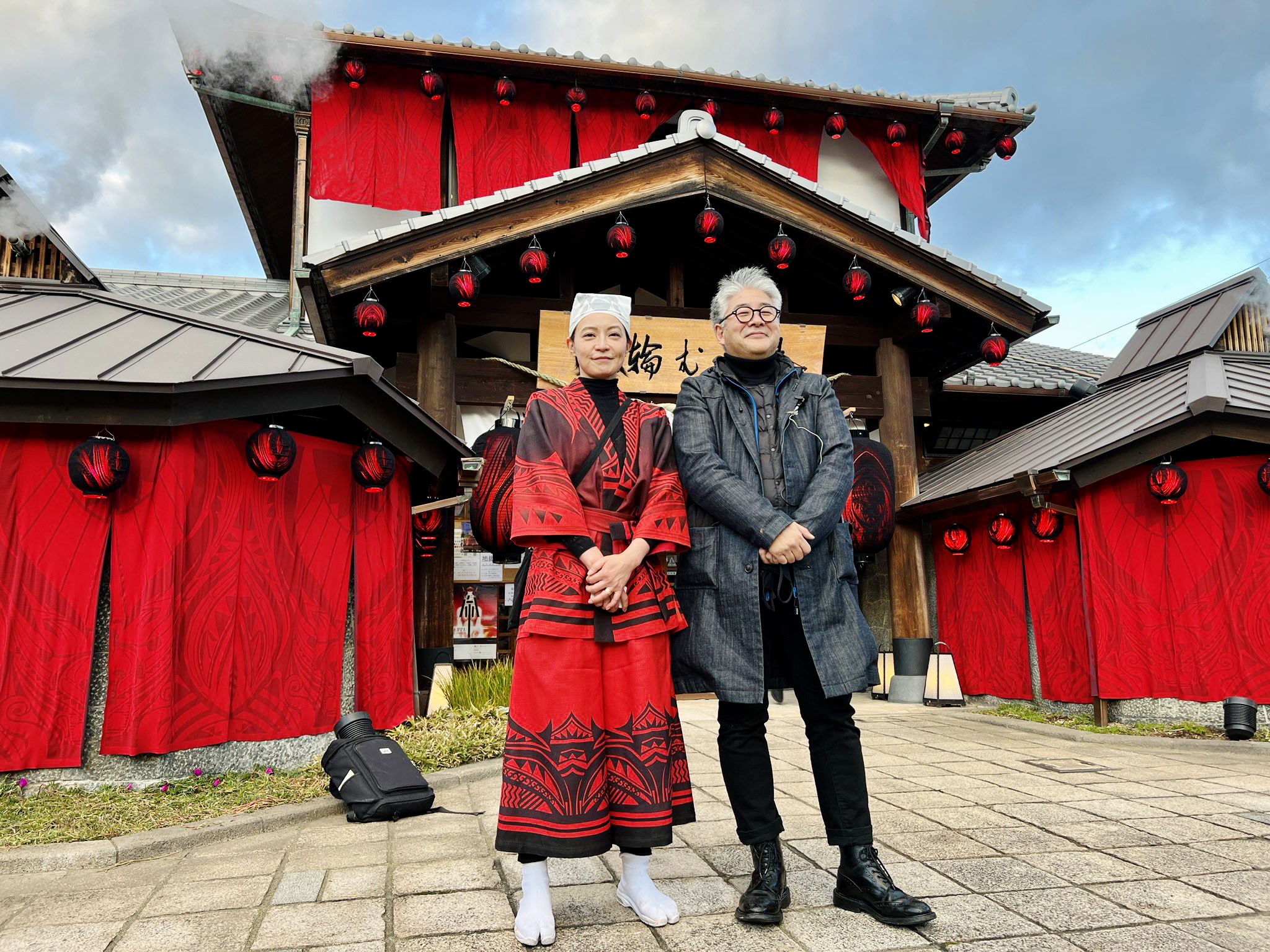
Hirokawa's intent for her matsuri was to restore some of the expression lost by face masks with vibrant costumes. She explains, "matsuri are a time when we give thanks for the gifts of nature, and pray for a bountiful and peaceful future. Now, perhaps matsuri can help us find the strength to survive."
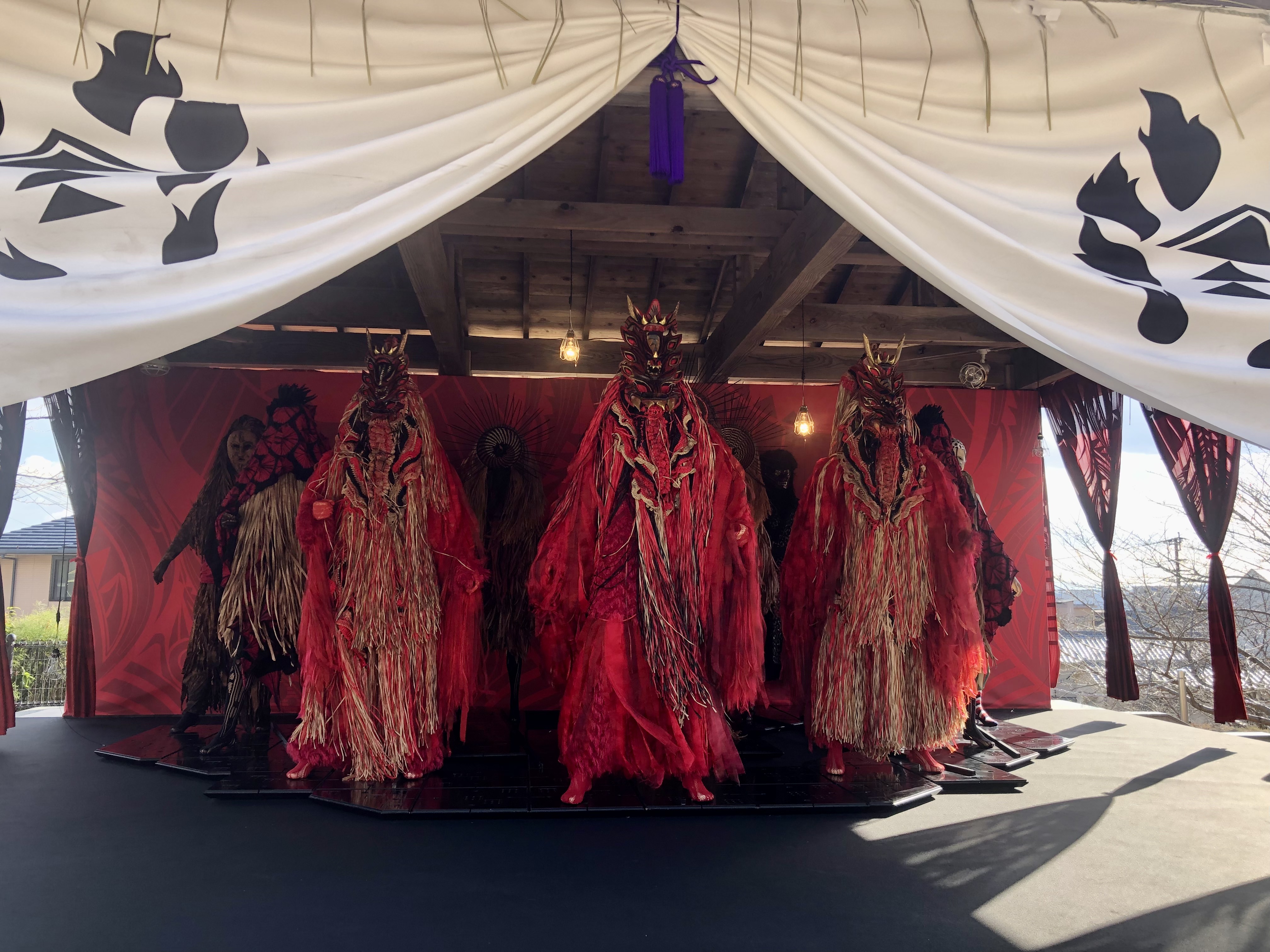
Following the Jigoku Matsuri event, the marebito costumes have been put on public display at Honoo Honome Shrine (viewing hours: 10:00–16:00) and Otani Park (10:00–19:00). These exhibitions can be viewed through February 13.
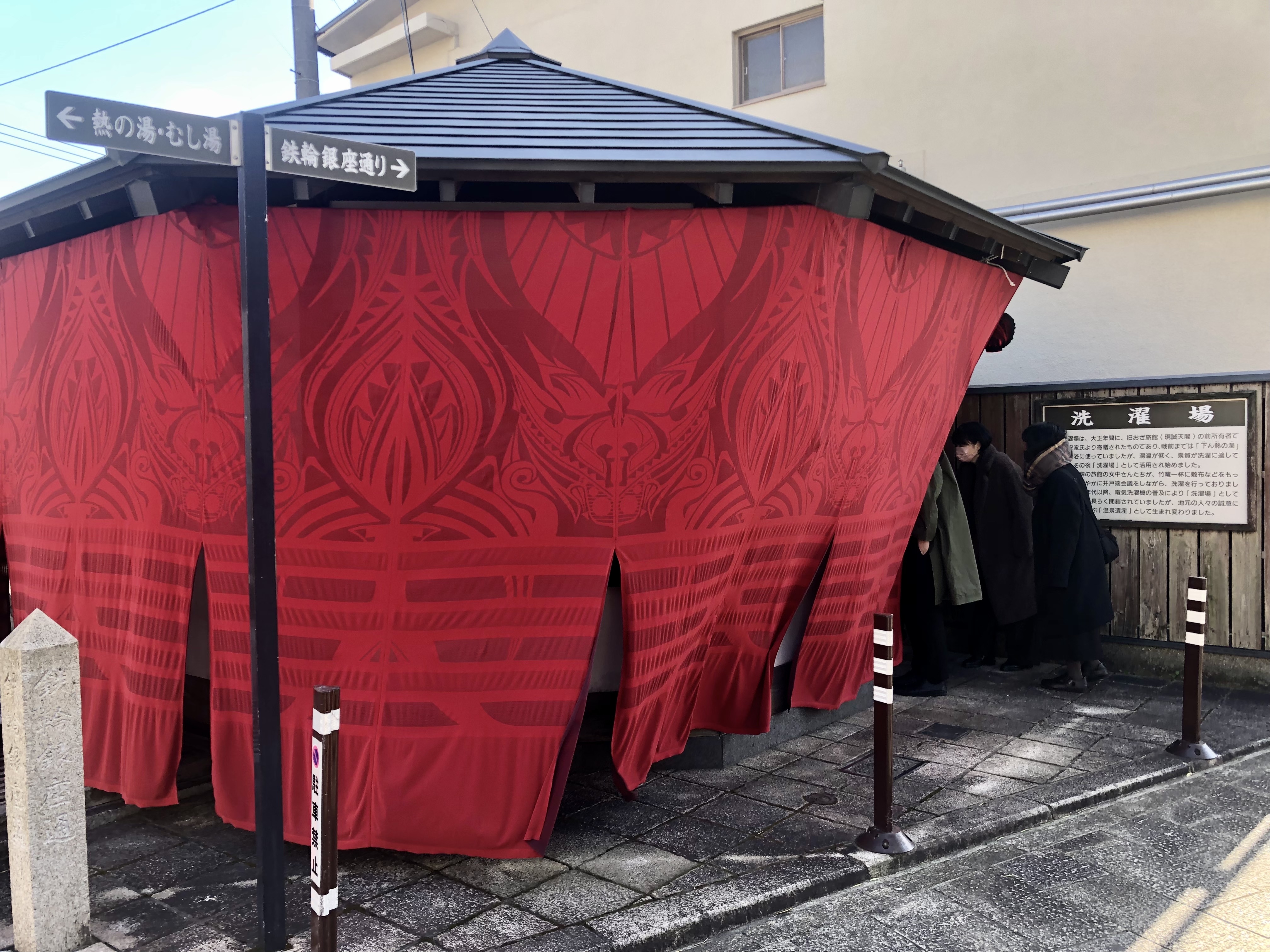
Videos from Hirokawa's "in Beppu" project are currently being shown at the Sentakuba Site. This was a place popular for using hot spring water to do laundry until washing machines became common after WWII. The videos can be seen 10:00–19:00 through February 13.

Hirokawa also created decorations and coverings for Beppu buildings with fabrics from her trademark Skin Series clothing line. Lanterns and noren shop curtains bear her signature style. Staff at Jigoku Mushi Kobo Kannawa, a restaurant where food is cooked with hot spring steam, wore costumes by Hirokawa. The building is bedecked in drapes and lanterns she designed.

On December 19, Hirokawa joined photographer Naoki Ishikawa at the Beppu co-working site "a side Masuya" for a discussion attended by the public and press. In 2019, Ishikawa had published a book of photography and essays titled Marebito. Because these deities only emerge around twice a year during holiday seasons, it took Ishikawa 15 years to travel all across Japan documenting them. He presented a slideshow demonstrating their rich regional variety. He and Hirokawa discussed traditional views of marebito as go-betweens for this world and the beyond. They noted that while these customs are dying in central Japan, they remain strong in the country's islands and peninsular areas. Hirokawa remarked that Beppu's geography and history as a city on a bay where outsiders once commonly landed perhaps primed it for a cultural receptivity that can still be seen today. The talk (in Japanese) can be watched online through March 31.
Tetsuya Umeda's "0 Tai"
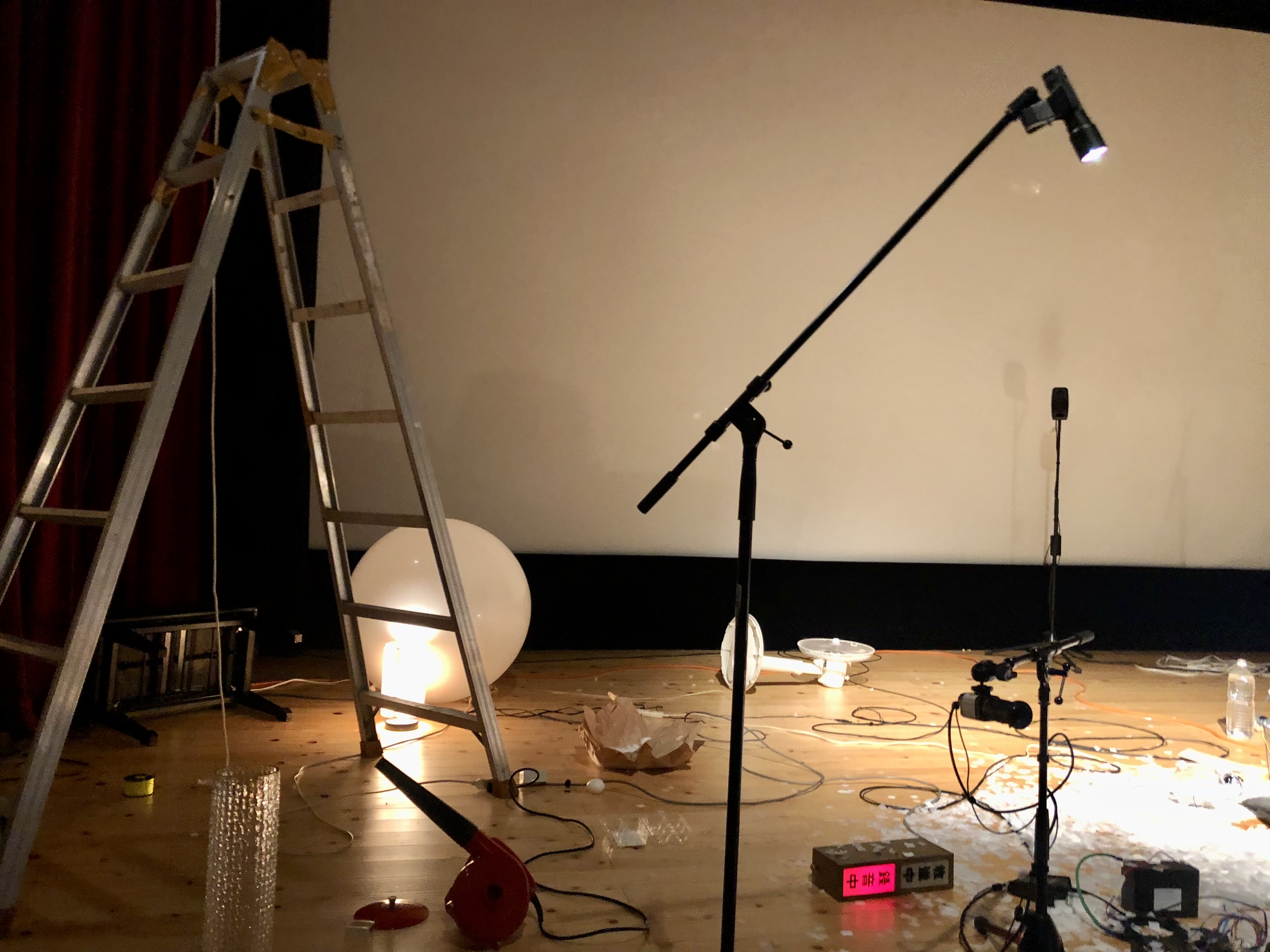
The artist Tetsuya Umeda's 0 Tai project, also described here, is the previous installment of "in Beppu." In this site-specific work, participants use handheld radios to tune into the sounds of Beppu's cultural and historical sites, which range from the grounds of a former amusement park to a beach, a ropeway, and a volcanic crater. A 0 Tai film expanding on the experience is also screened at Beppu Bluebird Theater. Please see the official website for reservations (required for the both the self-directed tours and the film) and for further details. On December 19, 2021, Umeda gave his first solo performance in Beppu in 12 years. Using a menagerie of everyday objects like a fan, a ladder, and a balloon arranged on the stage in front of the film screen, he enacted a production that at times interacted with and at others seemed to operate separately from the action in the film. The 0 Tai project, which was extended from last year after closing due to COVID-19, will conclude on February 13.



